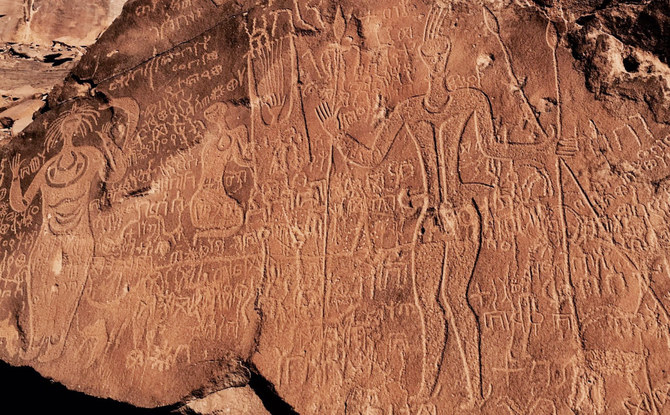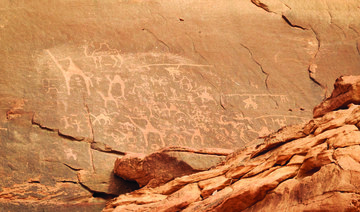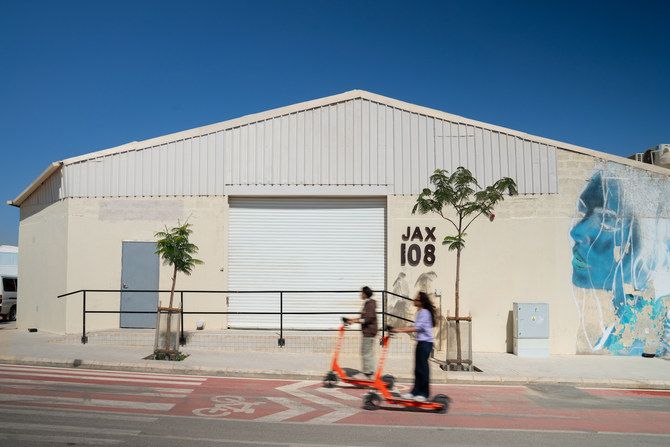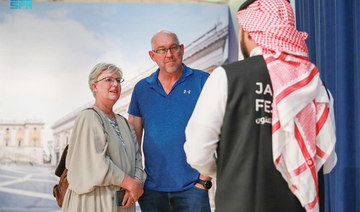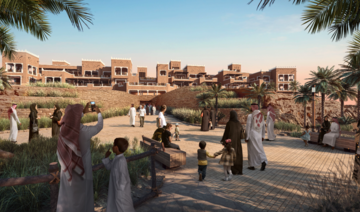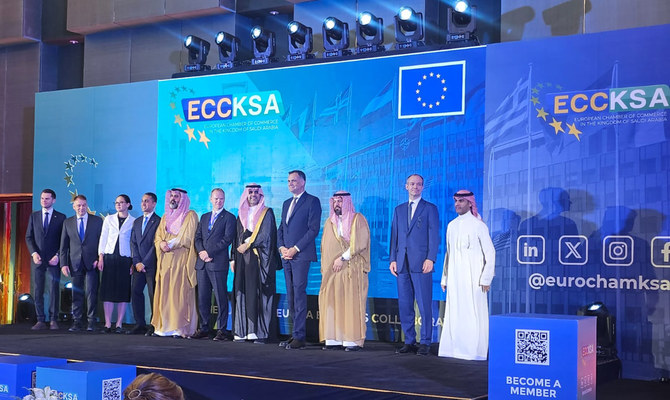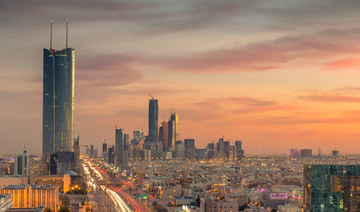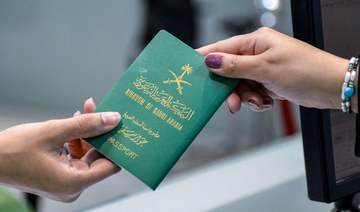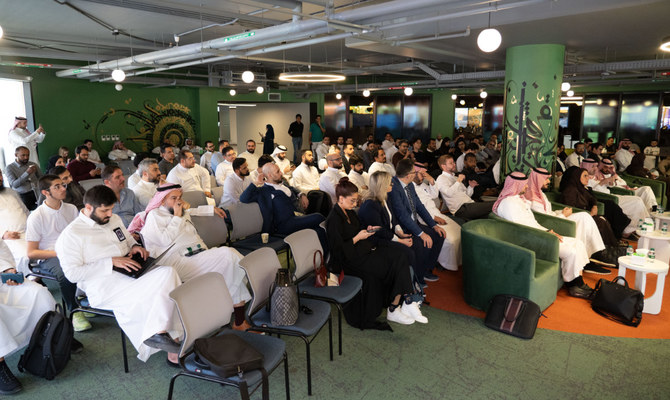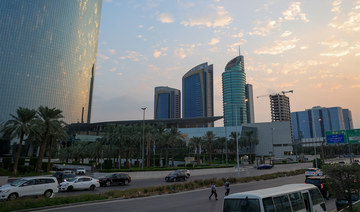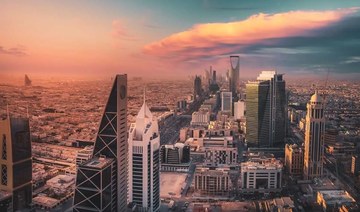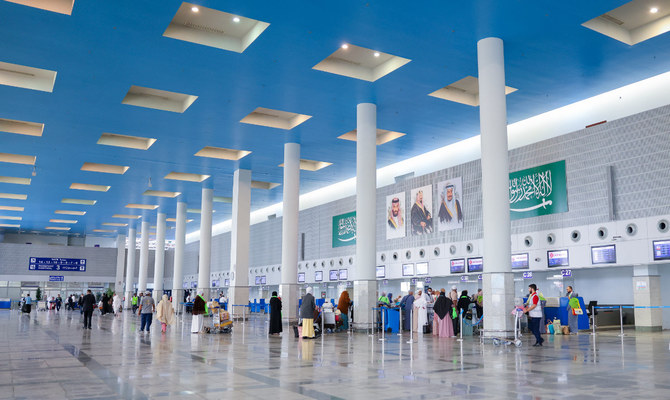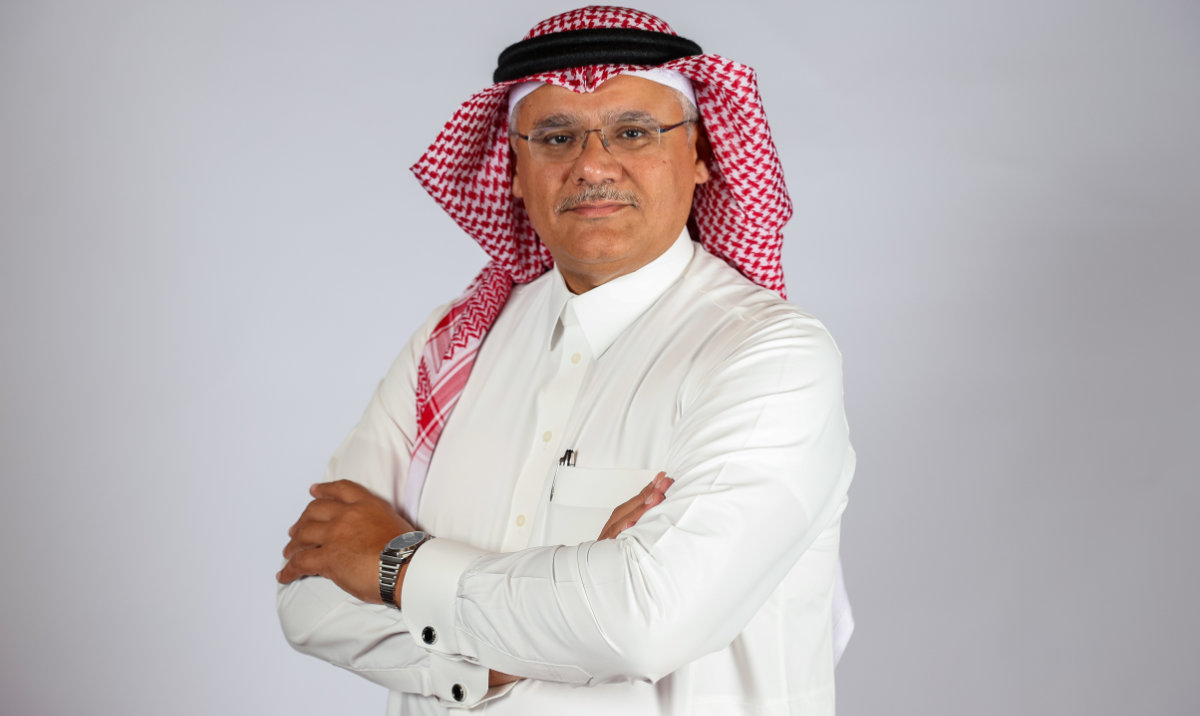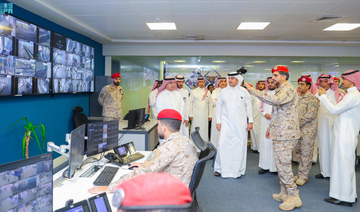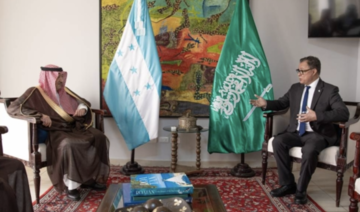MAKKAH: Rock drawings in Saudi Arabia — long considered crucial sources for the study of ancient civilizations in the Arabian Peninsula — are gaining increasing attention as more are found in unlikely locations across the Kingdom.
The drawings represent the first pillars of writing. Their study reflects the changes and developments in the Arabian Peninsula’s history and cultures, and how ancient humans dealt with the environment.
A drawing featuring a carved illustration of two women in the southern Saudi city of Najran — one adorned with jewelry and ornaments, and the other dancing next to a man carrying a spear on his waist — has raised many questions about the location, significance and period of its creation.
Salma Hawsawi, a professor of ancient history at King Saud University, told Arab News that the most ancient rock drawings in the Arabian Peninsula date back 7,000 years and are found mostly on ancient trade routes. “The rock drawing includes inscriptions written in the Thamudic script used firstly in the eighth century B.C. and the Ancient South Arabian script used firstly in writings in the middle of the second millennium B.C. In some archaeological studies in the ninth and eighth centuries B.C. and, most recently, in the sixth century A.D.,” she said.
Hawsawi said that “the use of two types of scripts on the drawing has several meanings, one of which suggests that ancient humans’ knowledge of several scripts reflects the interaction between communities since it has been known that the Thamudic script originated in the north of the Arabian Peninsula and expanded afterward to most of its regions, noting that the diversity of literature in the region is a testimony of the civilizational progression.”
The region was one of the most important stops for trade convoys heading from the south of the Arabian Peninsula to the north and vice versa, she added.
The drawing also features a man holding three spears, two in his right hand and one in his left, a dagger on his waist, and a pendant for ornamentation purposes or with other religious significances. The spears and dagger symbolize power, or preparations to fight a battle and confront an enemy.
According to Hawsawi, the human form in the rock drawing looks like the god “Kahl” of Al-Faw village, located in the center of the Arabian Peninsula, on a trade route from the south.
HIGHLIGHTS
• Salma Hawsawi, a professor of ancient history at King Saud University, said that the picture features a drawing of two characters who seem to be two women: The first one on the left is seated next to a spear or a musical instrument that looks like the rebab, with writings carved in all directions.
• The second woman is adorned with ornaments and jewels and has her hands raised, indicating dancing and body swaying. A hairstyle is also apparent in the drawing, suggesting the woman’s role in wars.
• The drawing also features a man holding three spears, two in his right hand and one in his left, a dagger on his waist, and a pendant for ornamentation purposes or with other religious significances. The spears and dagger symbolize power, or preparations to fight a battle and confront an enemy.
“Kahl,” referred to as the “moon,” is considered the first god in the ancient religious Arab ideology. It was linked to the commercial convoys for economic purposes, with offerings, vows and votive inscriptions. Al-Faw village was a transit city for many, with an intermingling of peoples. “A religious, social, economic, and cultural exchange resulted from this intermix,” she said.
Hawsawi said that the resemblance between both forms might indicate a type of sacred ritual. The repetition of the scene in terms of details of the weapons, music instruments, and general form of the character in many rock drawings gives the impression that it is a war dance. She explained that the picture features a drawing of two characters who seem to be two women: The first one on the left is seated next to a spear or a musical instrument that looks like the rebab, with writings carved in all directions.
The second woman is adorned with ornaments and jewels and has her hands raised, indicating dancing and body swaying. A hairstyle is also apparent in the drawing, suggesting the woman’s role in wars. Overall, the artistic drawing shows the social, religious and cultural state of an ancient civilization in Saudi Arabia, with evidence of different scripts throughout the image, she added.
“Despite their different interpretations, they represent the history and civilization of human beings who lived in the southwest of the Arabian Peninsula.”
Hawsawi said that the southwest region of the Kingdom is considered one of the most ancient human settlements, with archaeological evidence from various historical periods, starting from the Paleolithic age until Islamic times.
Inscriptions and rock drawings in the region offer information on clothing, ornamentation tools, weapons, stone fireplaces, rectangular and conical constructions, and basins. Drawings also show camels, cows, ibex, geese and wild animals, such as lions and wolves. Images also feature battles with knights using spears and hunting scenes. Larger-than-life drawings of humans show some wearing headscarves, with images of men with beards and pendants around their necks.
Saleh Al-Mureeh, a historical researcher, told Arab News that Najran is rich in archaeological and historic sites, making it a unique touristic model locally, regionally and globally.
“The ruins date back 4,000 years and, therefore, it is qualified to be a touristic and archaeological shrine by excellence.”
He said that the “two women drawing” is located in Sadr Al-Nakha in the governorate of Yadma in Najran, adding that the archaeological image has been subject to study, research and controversy for years.
“Some say they are reaching for the sky, while others say that these are a celebration and war dances. It gained a lot of attention from researchers, and it is located on the highest mountain. The Antiquities and Museum Commission discovered it and was shot by a professional Mexican photographer affiliated with the antiquities commission. The picture was publicly published in around 1997,” he said.
Al-Mureeh said that Najran is the home of civilizations and cultures stretching back thousands of years.
Archaeological sites were protected and fenced to avoid damage, while media campaigns have helped to raise residents’ awareness of the importance of these treasures and the need to preserve them as part of the historical identity of the region.



